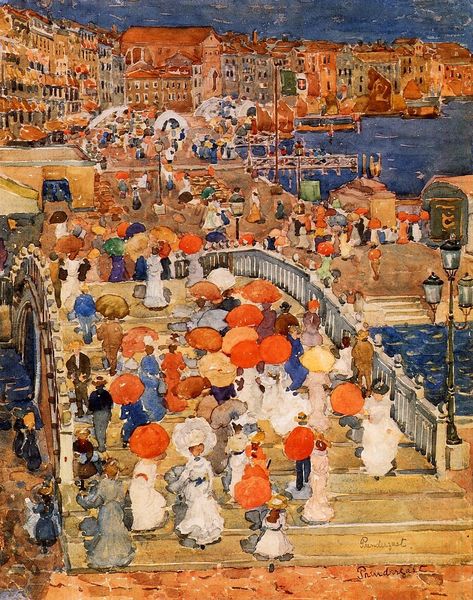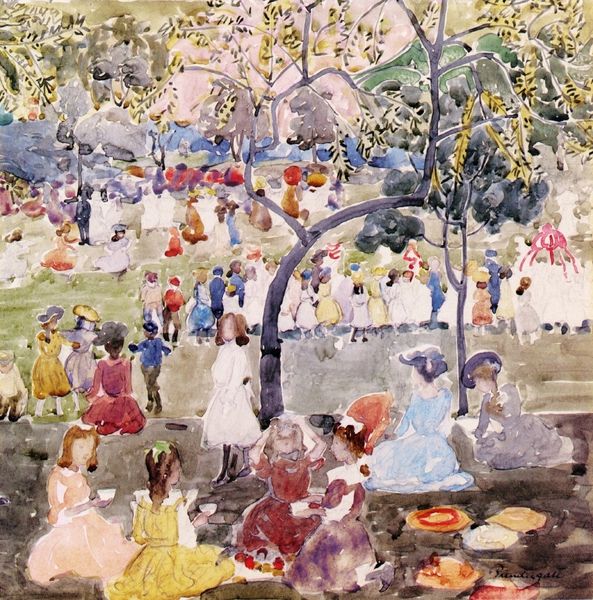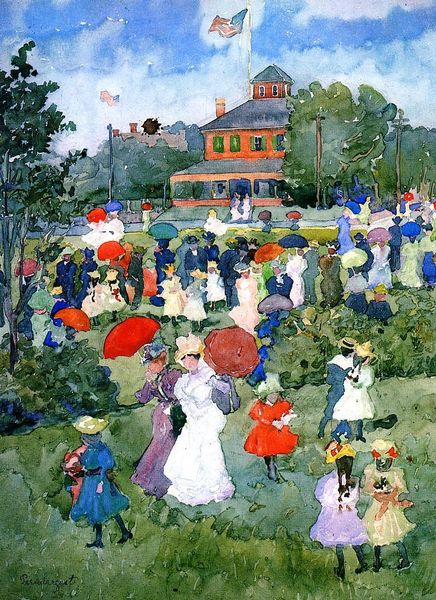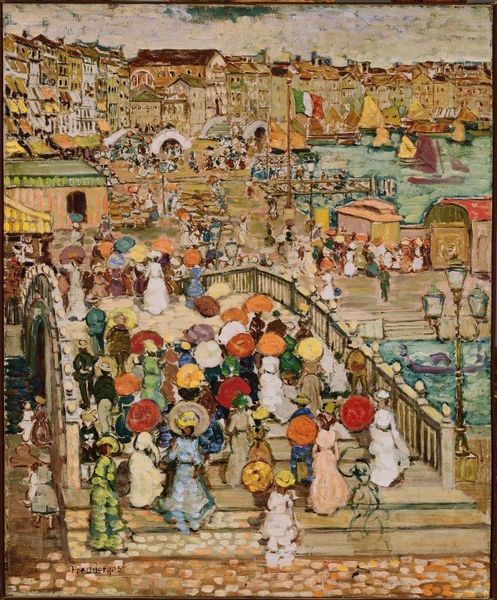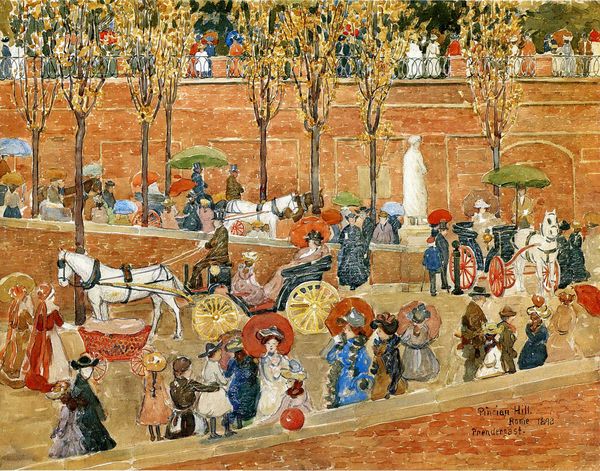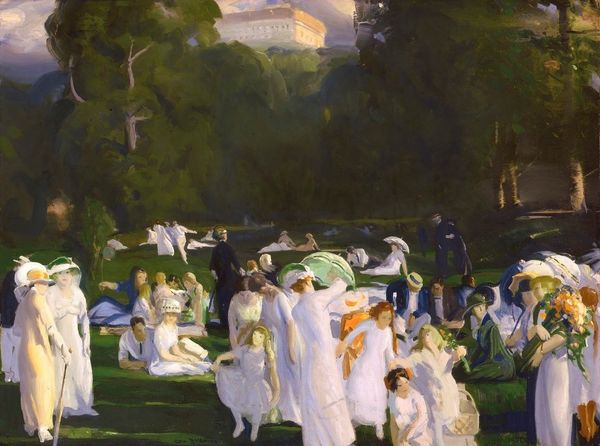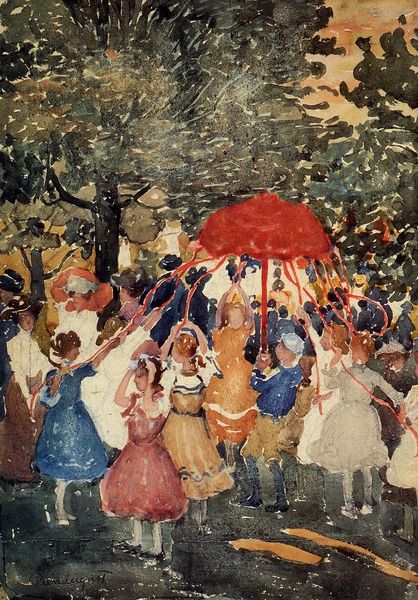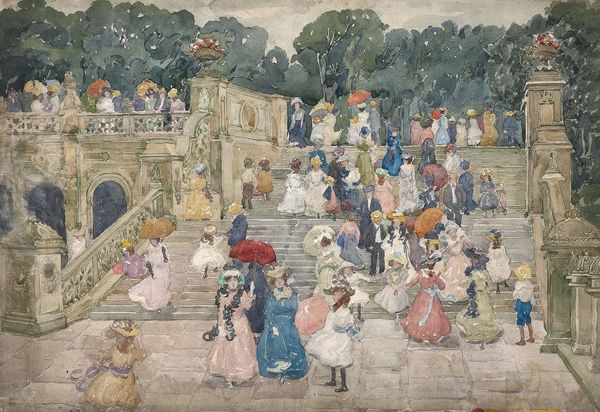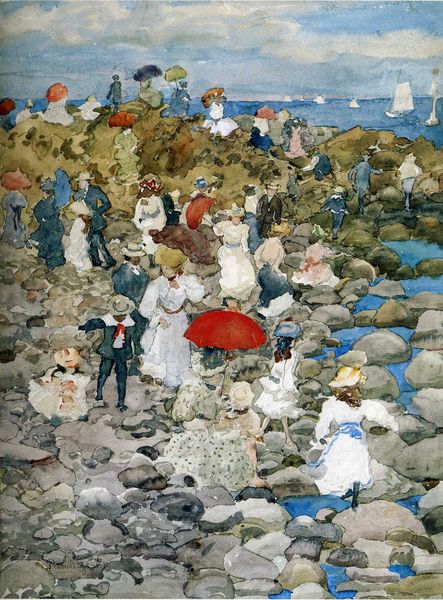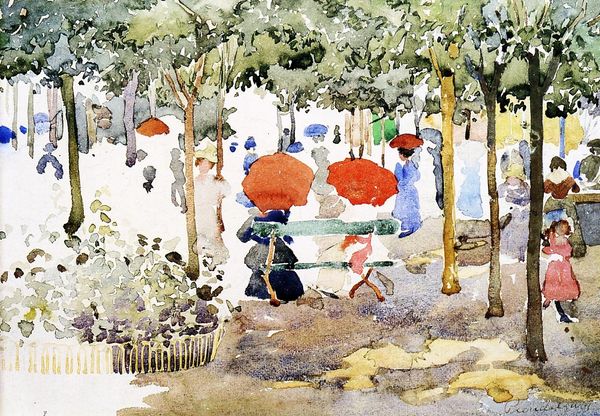
Copyright: Public domain
Editor: Here we have Maurice Prendergast's "Ponte della Paglia" from 1899. It appears to be a watercolor capturing a bustling street scene in Venice. I’m immediately struck by how light and airy it feels, despite the crowded composition. What do you see in this piece? Curator: I’m drawn to the labor embedded in the creation of this work. Consider the 'en plein air' aspect; Prendergast had to transport his materials and set up his easel amidst the very scene he was depicting. How does the immediacy of that act, that physical engagement with the environment, shape your understanding of the artwork? Editor: I guess I hadn’t really thought about the…the *doing* of the artwork, just the finished product. So, you mean, by him making the painting then and there it becomes more authentic to the conditions and materiality of the scene. Like, you feel the weather and see the light on the paper itself? Curator: Precisely! The visible brushstrokes and the nature of watercolor paint itself – its fluidity, its susceptibility to the elements – become part of the story. He’s not just representing Venice, he's *presenting* the Venice that day through the labour of his artistic process and using materials affected by Venice’s conditions. The consumption here also, a transaction. Editor: That makes sense! The umbrellas all seem to blur together into a visual fabric, almost like textile design… Curator: Indeed! It pushes us to consider the boundaries of high art versus craft. Isn't the application of watercolor, usually considered less "serious" than oil paint, crucial to achieving this effect? Do you see it elevating what some might consider a common scene of a Venetian bridge? Editor: I see your point! It definitely complicates how I viewed it initially. I was really struck by how pretty and simple the finished piece was. Now I'm more interested in what went into that final artwork. Curator: Ultimately, by analyzing the labor and material components, we can see how Prendergast's choices shaped not just an image, but a testament to a particular time, place, and process. Editor: I appreciate this shift of perspective, looking at a painting as material record that makes it mean so much more.
Comments
No comments
Be the first to comment and join the conversation on the ultimate creative platform.
